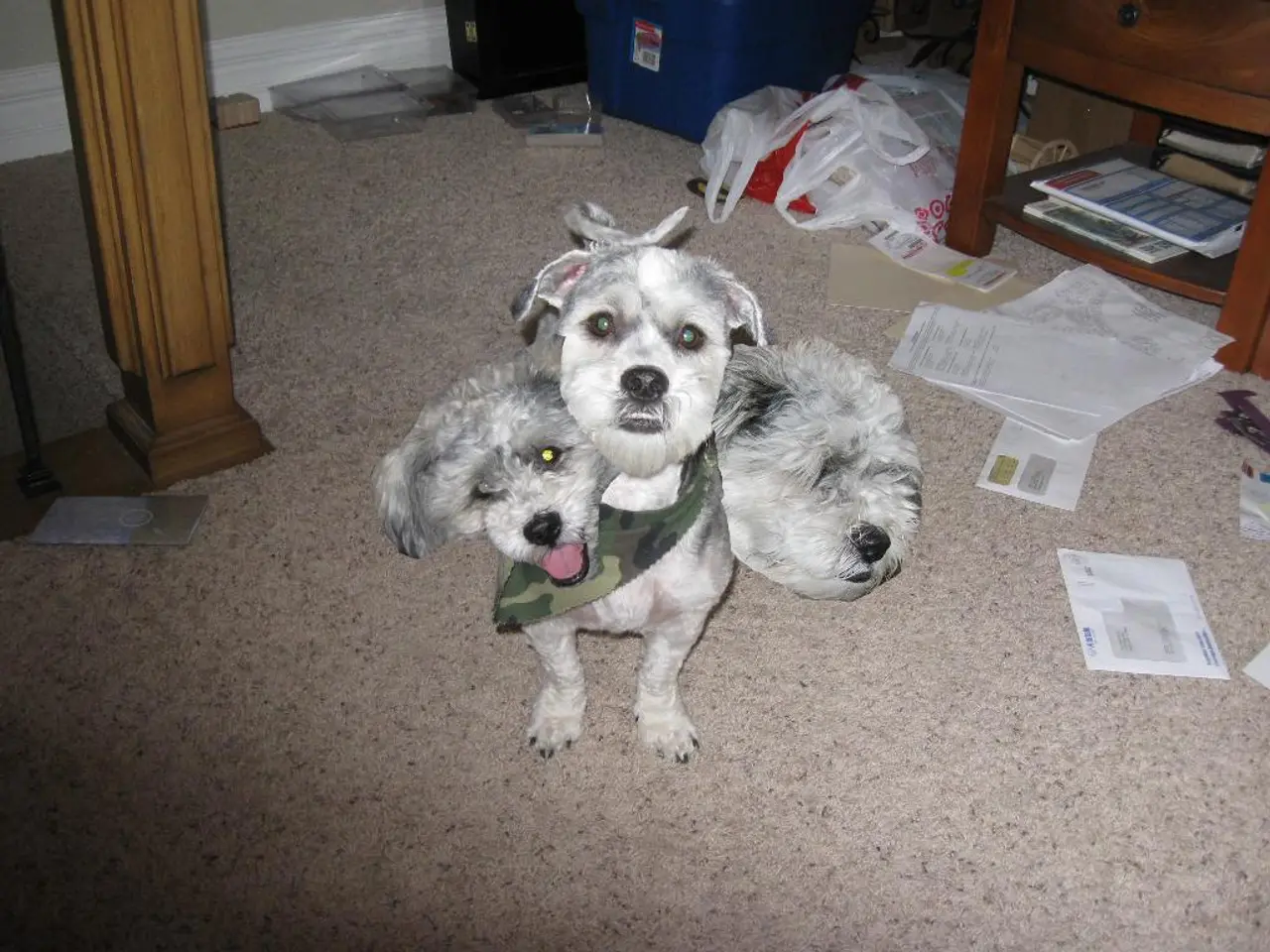Symptoms to Look for in Canine Dementia
Canine Cognitive Dysfunction (CCD), often referred to as dog dementia, is a common condition affecting older dogs, particularly those aged 11 years and above. According to recent studies, approximately one in three dogs older than 11 years exhibits signs of CCD, with this prevalence increasing with age [1][3].
Veterinarians use the DISHAAL acronym as a tool to identify key signs of dementia in dogs. These signs represent common cognitive and behavioral changes in affected dogs:
- Disorientation: The dog may appear confused or lost, even in familiar places, and could exhibit behaviors like blank staring at walls or corners [2][4].
- Reduced social Interactions: The dog becomes less interested in engaging with family members or other pets.
- Sleep-wake cycle disturbances: Changes in sleeping patterns, such as sleeping more during the day or restlessness at night [1].
- House soiling: Urinating or defecating indoors despite previous training [1].
- Activity changes: Either decreased activity or repetitive movements and pacing.
- Anxiety or increased irritability: Showing signs of distress, fearfulness, or unprovoked barking or whining [1].
- Loss of Learning and memory: Difficulty in remembering commands, routines, or navigating familiar environments [1].
These signs, when cumulatively observed, help vets diagnose CCD and differentiate it from normal aging.
Supporting Dogs with Dementia
There are several ways pet parents can support their dogs with dementia.
Medication
Dog dementia medicine, like selegiline, can help support cognitive function by increasing the level or amount of neurotransmitters available in the brain [5]. Other supplements, such as Senilife, containing antioxidants, can help counteract oxidative processes in the brain linked to cognitive decline in dogs with dementia [5].
Mental Stimulation
Mental stimulation, such as puzzle toys or gentle training sessions, can help slow cognitive decline in dogs with dementia [6].
Specially Formulated Foods
Specially formulated dog foods, such as Purina Pro Plan Neurocare, incorporate brain-supporting ingredients to help manage cognitive decline in dogs with dementia [6].
Adjusting the Home Environment
Simple adjustments around the home can help prevent confusion for dogs with dementia. Keeping doors open or closing off certain areas can reduce disorientation. A calm environment is important, helping dogs with dementia rest as much as possible. It's also crucial to ensure dogs with dementia have easy, unobstructed access to their favorite resting spots.
Calming pheromones can help soothe dogs experiencing anxiety or confusion, and can also help calm a dog with dementia at night. Dogs with dementia can become more sensitive and reactive to sights and sounds, developing a heightened fear of unfamiliar environments.
In conclusion, CCD is a significant concern in senior dogs 11 years and older, with about one-third affected. The DISHAAL acronym summarizes the seven core signs vets look for to identify dementia in dogs: Disorientation, social Interaction reduction, Sleep-wake cycle changes, House soiling, Activity changes, Anxiety, and Loss of learning/memory. Making thoughtful adjustments at home is the most important step pet parents can take to better support a dog with dementia.
- Mental health, particularly in dogs with dementia, can be supported through medication like selegiline and supplements such as Senilife, which increase neurotransmitter levels and counteract oxidative processes in the brain.
- In addition to medication, mental stimulation through puzzle toys or training sessions can help slow cognitive decline in dogs with dementia.
- Specially formulated dog foods, such as Purina Pro Plan Neurocare, can provide brain-supporting ingredients to help manage cognitive decline in dogs with dementia. Furthermore, adjustments to the home environment, like keeping doors open, reducing disorientation, and creating a calm rest space can also be beneficial for a dog's mental health and wellness.




